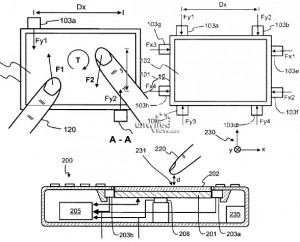 If you have patents or have been involved in patenting, then you have heard about the difference between design and utility patents. The explanation probably went something like this:
If you have patents or have been involved in patenting, then you have heard about the difference between design and utility patents. The explanation probably went something like this:
A utility patent protects how a thing does what it does. A design patent protects the appearance of the thing.
And:
A design patent cannot protect the functional aspects of the design – the function of the invention is the exclusive realm of the utility patent.
These principles are easy to summarize, but hard to apply.
In the 2010 case of Richardson v Stanley Works, the Federal Circuit Court underscored that design patents do not protect the function of the invention.Richardson considered whether a Stanley carpenter’s tool infringed a design patent for a similar tool. The lower court identified each of the functional and ornamental elements of the patented tool and excluded the functional aspects from consideration. The Federal Circuit affirmed.
Some litigants and trial courts reached the conclusion that Richardson required that trial courts expressly ignore any feature of a patented design that serves any function when considering whether a design patent is infringed. If this position were the law, it would severely limit the value of design patents.
The Federal Circuit has been backing away fromRichardson ever since. In Apple v Samsung, Samsung argued that Apple’s design patents for the iPhone and iPad had very limited scope because the design elements of those devices are functional. The Federal Circuit rejected the argument and determined that Samsung infringed Apple’s design patents.
In Ethicon Endo-Surgery v Coviden and in SportDimension v Coleman Co., decided last week, the trial courts refused to consider functional elements of the designs. In Ethicon, the design patent related to a handle and an adjustment knob for a surgical tool. Since the handle and adjustment knobs both served functions, the trial court concluded that they could not be protected by design patent and the issued patent protected nothing at all. In Sport Dimension, the trial court concluded that certain features of a water wing-type flotation device were functional and refused to consider any ornamental aspect of those functional features. In both cases, the Federal Circuit rejected the argument and reversed the trial courts. In each of these cases, the Federal Circuit concluded that the trial court must consider the ornamental design of even functional parts.
The most important question that the courts will consider in determining whether a design element is too functional for design patent protection is whether there are alternative designs that a competitor can use to perform the same function. If there are alternatives that perform as well, then the court is unlikely to determine that the element is too functional to protect by design patent. Other factors a court will consider are whether the patented design is the ‘best’ design, whether utility patents address the same features, whether advertising touts the features.
The bottom line: the ornamental aspect of even functional features can be the subject of a design patent, for example the curved shape of a tool handle or the rounded corners of a tablet computer
— Robert Yarbrough, Esq.

